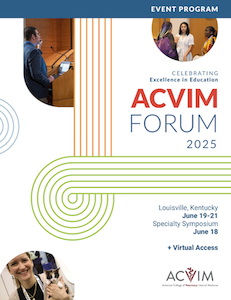Small Animal Internal Medicine
(SC02) First Step Toward Precision Veterinary Clinical Decision-support Development Incorporating Physiological and Electronic Health Records
Thursday, June 19, 2025
6:30 PM - 6:45 PM ET
Location: Exhibit Hall Poster Park - Kiosk 10

Manlik Kwong, BSEE, BSCS
Scientist/Engineer, Sr Informatics Advisor, Research Instructor
Tufts Medical Center, Tufts CTSI, Tufts School of Medicine
Boston, MA, United States
Research Abstract - ePoster Presenter(s)
Abstract: Interest and work in using machine learning and artificial intelligence (ML/AI) to develop and improve clinical decision-making is an active area within human medicine. Examples in human medicine include clinical decision-support in intensive care unit (ICU) sepsis infections [1] to computerized interpretation of electrocardiographic conditions such as left ventricular dysfunction [2] and arrythmias detection using deep learning methods. [3] These approaches and methods can be translated to veterinary medicine to improve pre-surgery assessment for fitness to reduce unnecessary death and adverse outcome or arrhythmia diagnosis to initiate appropriate management strategies. [4] Real-time monitoring and assessment of physiological signals including multi-lead electrocardiographic signals during interventions such as surgery could provide early indicators of emergent adverse events. To enable the development of new veterinary clinical decision support tools and methods to facilitate and support complex ECG interpretation across the care spectrum, high fidelity data must be acquired. Further such data must be reviewed and annotated and linked to medical histories and outcomes to form reference datasets from which clinical decision aids can be derived and dissemination issues identified to translate such tools from bench to bedside. The standardization of electronic health record data is now becoming readily available (e.g., Observational Health Data Science and Informatics’ Observational Medical Outcomes Partnership – OHDSI OMOP common data model) and the integration of high fidelity physiological will further expand the capacity of research and discovery.


